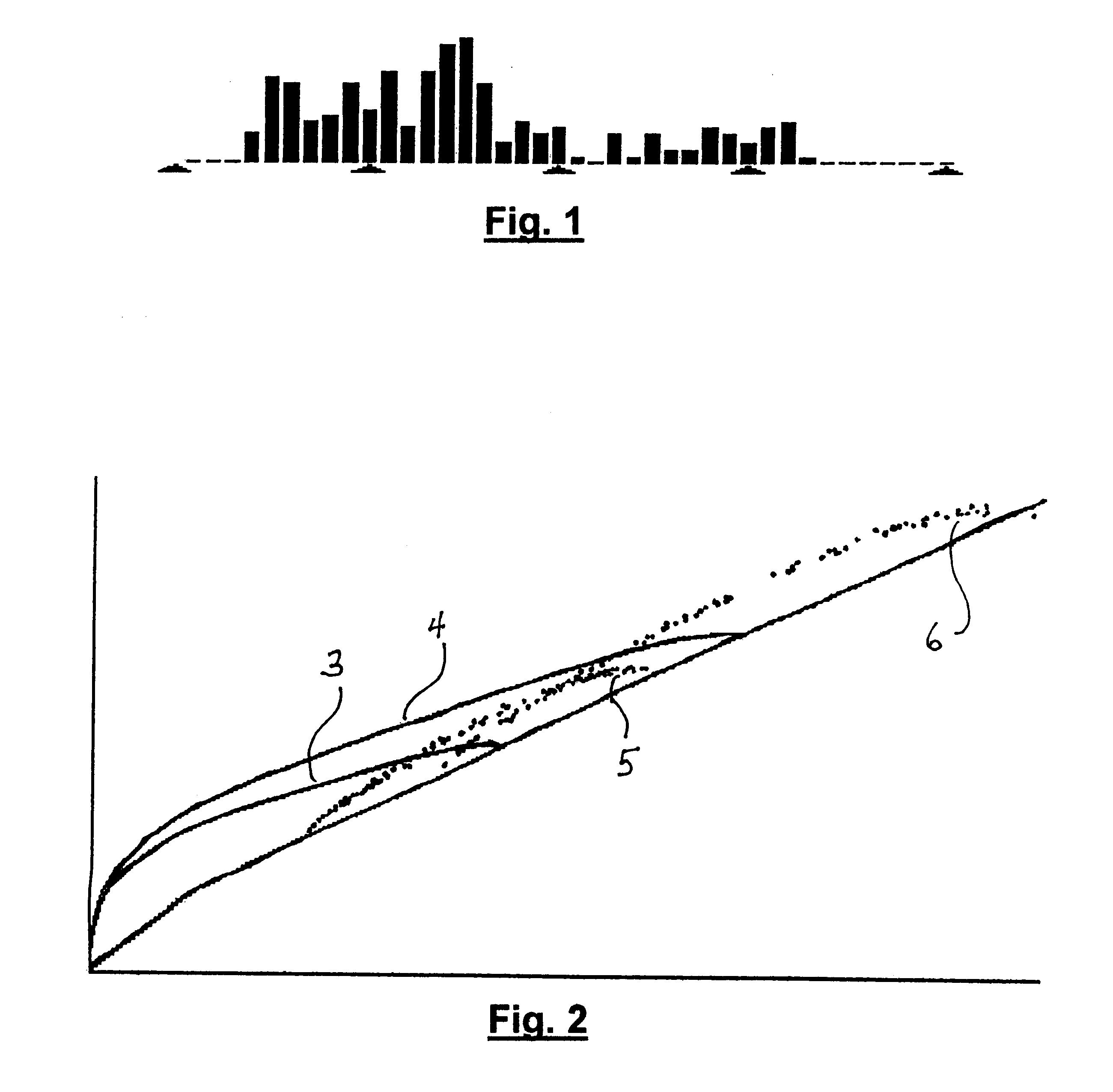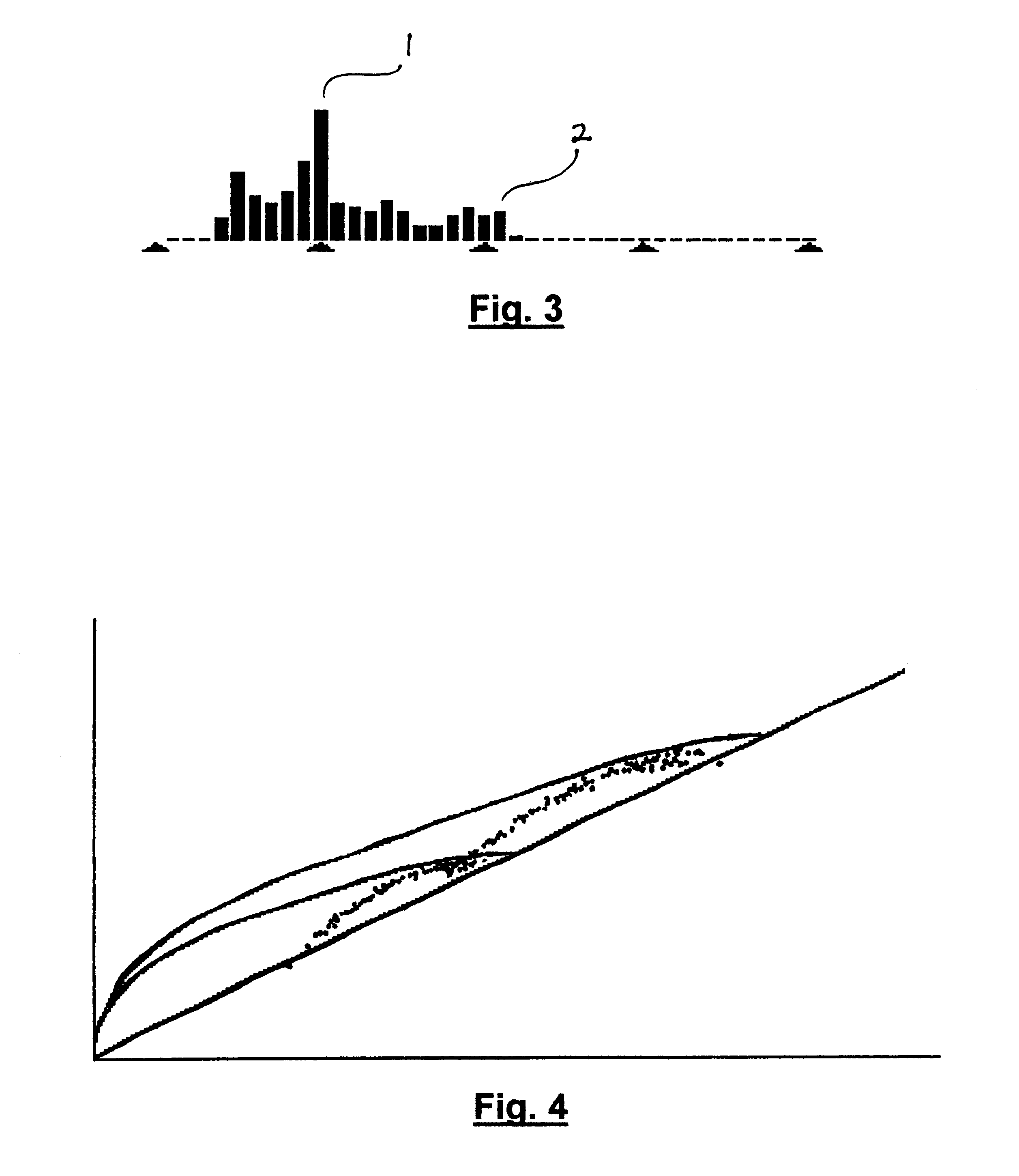Method of using perimeter measurements to improve ploidy analysis in a tissue section
a tissue section and perimeter measurement technology, applied in the field of quantitative dna measurement in the tissue section, can solve the problems of not being able to measure cells, unable to separate distinct tumor areas, and inability to use the measured cells
- Summary
- Abstract
- Description
- Claims
- Application Information
AI Technical Summary
Problems solved by technology
Method used
Image
Examples
Embodiment Construction
In the preferred embodiment, a computer program written in TurboPascal v. 7.0 (Borland International, Inc., Scotts Valley, Calif.) runs on an IBM-compatible personal computer equipped with central processing unit, random access memory, a floppy disk drive, a hard drive, a standard keyboard, a printer, and a video monitor. An operator downloads data (including quantitative nuclear DNA content, profile area, and profile perimeter for each of a plurality of cell nuclei and cell nuclei in a tissue section) obtained by image analysis of a tissue section, and then can employ both the MMP and the RCM in each of the below Modes of operation, switching from one mode to another at will. This gives many different perspectives on the interpretation of the data.
The present invention calculates an eccentricity index for each nucleus and truncated nucleus, and uses it to improve the accuracy of the calculated ploidy and to improve discrimination of the different ploidy subpopulations. The eccentri...
PUM
| Property | Measurement | Unit |
|---|---|---|
| nuclear diameter | aaaaa | aaaaa |
| thickness | aaaaa | aaaaa |
| Volume | aaaaa | aaaaa |
Abstract
Description
Claims
Application Information
 Login to View More
Login to View More - R&D
- Intellectual Property
- Life Sciences
- Materials
- Tech Scout
- Unparalleled Data Quality
- Higher Quality Content
- 60% Fewer Hallucinations
Browse by: Latest US Patents, China's latest patents, Technical Efficacy Thesaurus, Application Domain, Technology Topic, Popular Technical Reports.
© 2025 PatSnap. All rights reserved.Legal|Privacy policy|Modern Slavery Act Transparency Statement|Sitemap|About US| Contact US: help@patsnap.com



